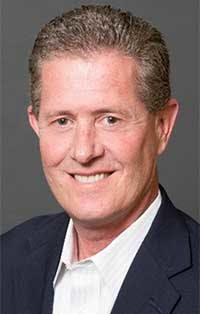What to Expect From Enterprise Data Center Demand in 2023
Our panelists include Peter Panfil from Vertiv, Phillip Marangella of EdgeConneX, Schneider Electric's Frank Nash, Shannon Hulbert of Opus Interactive, NTT Global Data Centers' Steven Lim, and Eric Boonstra of Iron Mountain Data Centers. The conversation is moderated by Rich Miller, the founder and editor of Data Center Frontier. Here’s today’s discussion:
Data Center Frontier: How would you assess enterprise IT demand, and what do you see ahead in 2023?
So, today, as the cloud provider bills start to come due and as different providers offer different solutions, a lot of businesses are looking more closely at multi-cloud and hybrid cloud solutions. They understand that digital transformation is an ongoing process, not something they do once and forget about. As a result, demand may fracture a bit, as enterprises explore different paths to efficiency and optimization, but it will continue to grow around the globe.
These new enterprise data centers are the hubs of an increasingly distributed hybrid network that also includes cloud resources and a robust edge of the network. These hubs are and will be higher energy density, more efficient, and highly secure, while housing the organization’s most sensitive data. Depending on the company and the nature of the business, it’s not uncommon to see several of these smaller enterprise facilities deployed as needed in a modified hub-and-spoke network design, similar to the way a telecom central office can support a defined section of a telco network. These are owned facilities that function almost like a multi-access edge computing (MEC) deployment.
Enterprise is also embracing the focus on sustainability. Higher efficiency, less water usage and decarbonization efforts that were thought to be the purview of hyperscalers and MTDCs are just as important if not more at the enterprise level.
As we sit today, many of those same enterprises are now trying to catch up with their own data center requirements and build out for the future. These enterprise customers have started adopting some of the same buying strategies and sophistication as hyperscale customers, and they’re buying larger footprints around the world to take advantage of available capacity in the markets they’re looking for. We don’t anticipate this to slow down anytime soon, although the rapid shift in economy and looming recession may change that outlook yet again.
To keep up with this demand today, we are having to look at larger campuses and buildings to support our customers of all sizes. NTT must continue to maintain flexibility while offering the right mix of technology, products, and services to help enterprise clients effectively manage the growing complexity of their infrastructure.
Eric Boonstra, Iron Mountain Data Centers: It is interesting to see that Gartner predicts that global IT spending will climb to $4.6 trillion in 2023, registering a year-over-year increase of 5.1%. This basically makes enterprise IT spending ‘’recession-proof,’’ although tech stocks dropped significantly this past year.
I feel that IT demand for enterprises is a wide net, where some are working fully in hybrid multi-cloud platform environments while others are just starting their journey by taking their IT infrastructure off-prem. If one thing stays through throughout the years, that is that digital transformation is reshaping and creating new revenue streams for enterprises. So rather than slowing or declining, enterprise companies, large and smaller, keep investing in their IT spend, and we see that as a data center operator with a global portfolio across the board.
Yet, we also see companies committing to 100% cloud (FedEx) so we expect to see a continuation in hybrid environment deployments as we alluded to in our observations on the Edge. Lastly, recent programs and government funding are fueling significant investment in the K-12 and SLED space so opportunities will abound as educational systems invest heavily in upgrading and expanding their IT capabilities.
Savvy IT buyers are building to take advantage of solutions that offer the right levels of security, compliance, location, and cost. We’ll see more or that in 2024 and beyond.
NEXT: Our panel discusses the key trends in data center sustainability for 2023.
Keep pace with the fact-moving world of data centers and cloud computing by following us on Twitter and Facebook, connecting with DCF on LinkedIn, and signing up for our weekly newspaper using the form below:
About the Author









